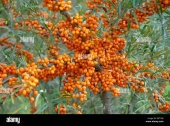



Moses Taylor wrote:I came here looking for a conservative type of people mainly Christan... There's just not a lot of that here, I'm hoping to find somewhere there is homesteaders together that are really conservative and Christian...



"Lime Prime is America's best (AND SAFEST) paint after flooding and preventing moldy surfaces. This low odor, mineral based, zero-voc product dries fast and is the best way to let surfaces dry out safely. Whether you're doing Disaster Relief, remodelling a musty basement, repairing flood damage, protecting wood frame construction, or simply want to coat your walls and protect your family, Lime Prime is the best way to go.
Lou Manfredini showed Lime Prime to Kathie Lee and Hoda on the TODAY SHOW a while back and we couldn't be more proud. As a family business, the health and well being of your friends and loved ones is our number one priority. If we wouldn't use it in our homes, we don't sell it! Thanks to NBC for spreading the word!
Recommended for: Drywall, Concrete and Wood. Recommended Spread Rate: 250-300 sq ft / gal.
ZERO VOC LIME PRIME - Covers mold stains and resists deterioration by mold.
We have taken a 10,000 year old technology and engineered it to be safely applied directly over high moisture content, Mold and Mildew stained surfaces. This product uses the power of lime to penetrate and saturate the porous cell structure of wood, drywall and concrete matrix. Lime Prime has endured the test of time in all regions of the USA and works naturally to keep coated surfaces clean. We've seen exposed areas stay clean for well over 7 years. Enclosed areas like wall cavities remain effective indefinitely.
This is not a latex paint loaded with excessive chemical biocides and called a mold killing paint. Nor is it a basic Lime Wash. It is an Earth derived advanced inorganic mineral technology. Lime Prime is engineered for use where conventional coatings fall short and health concerns are primary."


